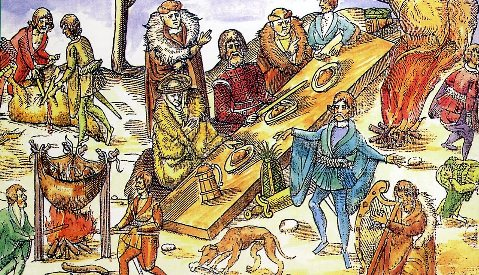An ancient Roman archaeological site's chemical study of human remains has revealed fresh information about the nutrition of individuals who lived along the Italian coast over 2000 years ago. In Herculaneum, one of the towns covered in volcanic ash after Mount Vesuvius' eruption in the year 79CE, there was a gender gap in access to several foodstuffs, according to the research.
Skeletal remains of victims of the eruption of Vesuvius in 79CE. By extracting collagen from 17 skeletons the York team were able to infer the kind of diet Herculaneum residents had
A group of bioarchaeologists from the University of York in the UK, led by Silvia Soncin and Oliver Craig, examined the amino acids in preserved bone collagen from 17 eruption victims. The researchers was able to more precisely rebuild meals using a model that takes into account both food sources of amino acids and the human metabolic processes that synthesize them.
“For example, by using the carbon isotope values of alanine, we know that we are getting information about the consumption of carbohydrates rather than proteins or fatty acids. And that’s because alanine is synthesised from the consumption of carbohydrates,” mentions Soncin, who is now based at Sapienza University of Rome, Italy. “We also considered all the protein components of diet, and that’s particularly important if we want to detect those food sources that are really high in concentration of protein – such as fish or terrestrial animal products.”
“By refining analyses from bulk collagen to analysis of particular amino acids, they improve the precision of estimates of diet composition,” explains Anne Katzenberg, an expert in using stable isotope analysis to determine past diet based at the University of Calgary, Canada, who was not involved in the study. “In particular they demonstrate a greater reliance on marine fish than was evident from bulk analyses.”
In contrast to what would have been assumed, the amino acid analysis revealed that fish represented about 25% of the dietary protein ingested by people in Herculaneum. The discovery highlights how vital seafood was to this community considering that, in modern Mediterranean people, less than 10% of their diet's protein comes from fish.
Unique photograph
According to Soncin, when testing archaeological remains, researchers typically have to accept some biases. For example, it's possible that the people were sick and changed their diets, and burial sites may span decades or even centuries with changing diets. However, Herculaneum provides a rare glimpse into a "living population" because none of these individuals would have perished if it weren't for the eruption.
The research team noticed that the relevance of some meals varied between men and women's diets. The men ingested almost 50% more proteins from seafood, while the women had less access, according to Soncin. "The most striking one is perhaps the marine consumption," she adds.
Soncin thinks that this might be the case since men in Roman culture typically held more privileged positions and had more money to spend on meals. “And probably men were more likely to be directly involved in fishing related activities – and so were most likely able to access those kinds of food sources”, she continues.
Men also ingested more grains, whereas women seem to have relied more on terrestrial animal products, including milk, cheese, and eggs, rather than just meat. “We are still reflecting on this result because it was really surprising for us,” says Soncin. “Perhaps it’s just because the women had to find an equilibrium for the deficiency of fish … and so accessing animal products was a good compromise.”
According to Katzenberg, “This also has broader implications if used in other contexts where dietary differences due to sex, status or age may be of interest with respect to reconstructing past human behaviour. Diet reconstructions provide a window into past human behaviour and by improving their resolution, knowledge of the past becomes clearer.”
Going further
Robert Tykot, a researcher at the University of South Florida in the US who also focuses on bone chemistry and ancient diet, says, "Compared to previous published studies of pre-modern Mediterranean individuals using bulk stable isotope analysis, I found the results suggesting a significant amount of seafood in the diet highly significant." Tykot believes Soncin's team will be able to examine more than just the 17 people in order to get a more complete picture of the nutrition of the people of Herculaneum. Further research at sites like Pompeii and other inland Roman sites, he adds, may enable comparisons to be drawn between social classes and individuals who could be expected to have less access to seafood.
The team is already preparing to delve further into the cuisines and way of life of these pre-Roman people, according to Soncin. “There’s so much that we can learn about [the Herculaneum population] – for example, it would be interesting to do DNA [analysis]”, the researcher claims. “We don't know who these people were; it's possible that they were all freedmen who were released from slavery, coming from somewhere else in the Mediterranean,” the author said. "The Bay of Naples was a really important port in trade in the Mediterranean."
The group is eager to use the same approach with other Roman groups. According to Soncin, "there’s this kind of belief that the Roman diet was always the same – they consumed a lot of cereals, vegetables, and only small amounts of animal products and fish. We saw that it’s a bit different at Herculaneum and we want to see if this is the case in other communities. If we start collecting different data, we can also see if there’s a response to people’s diet depending on the economic role of this community, or different political or cultural influences."







